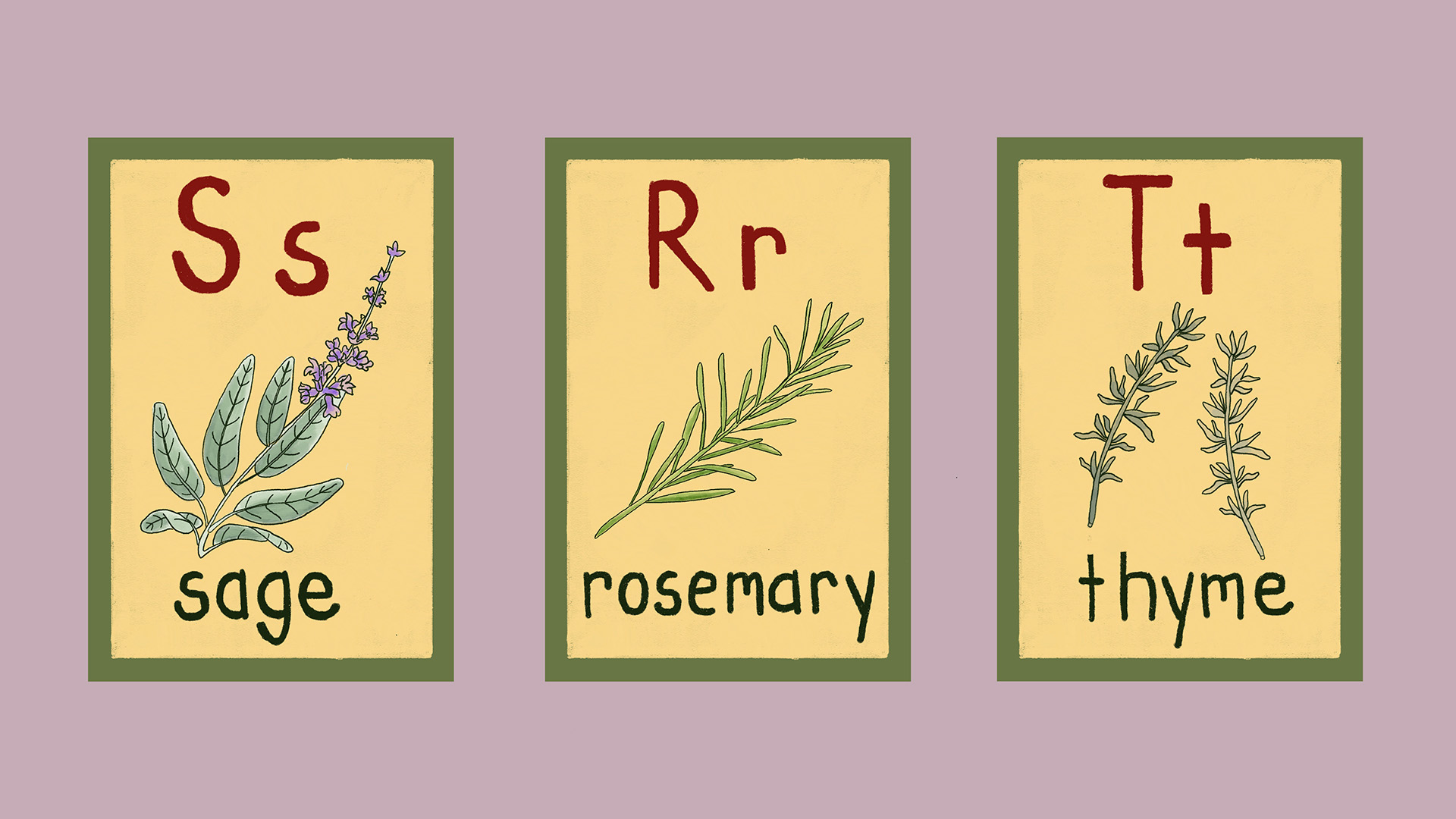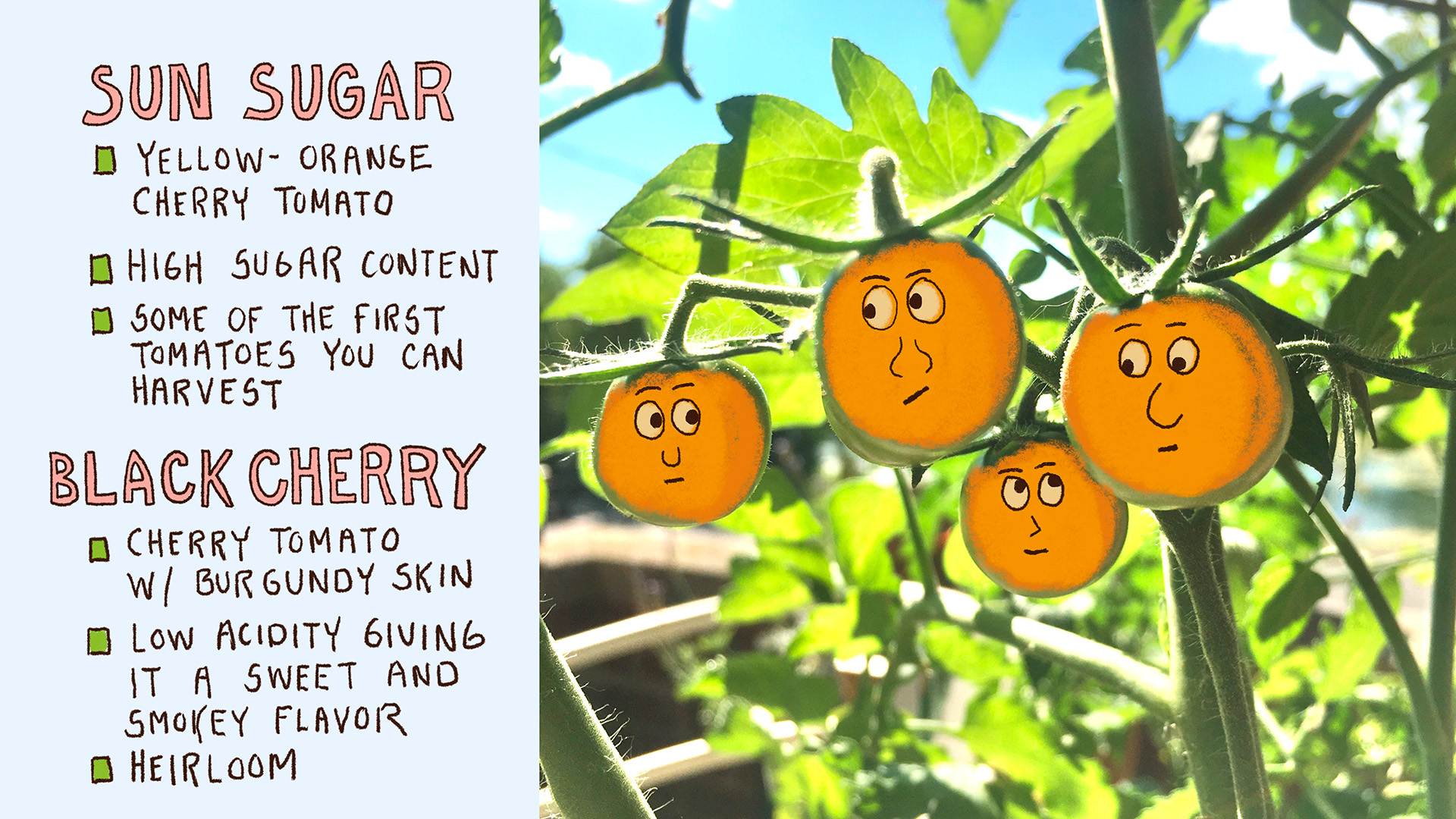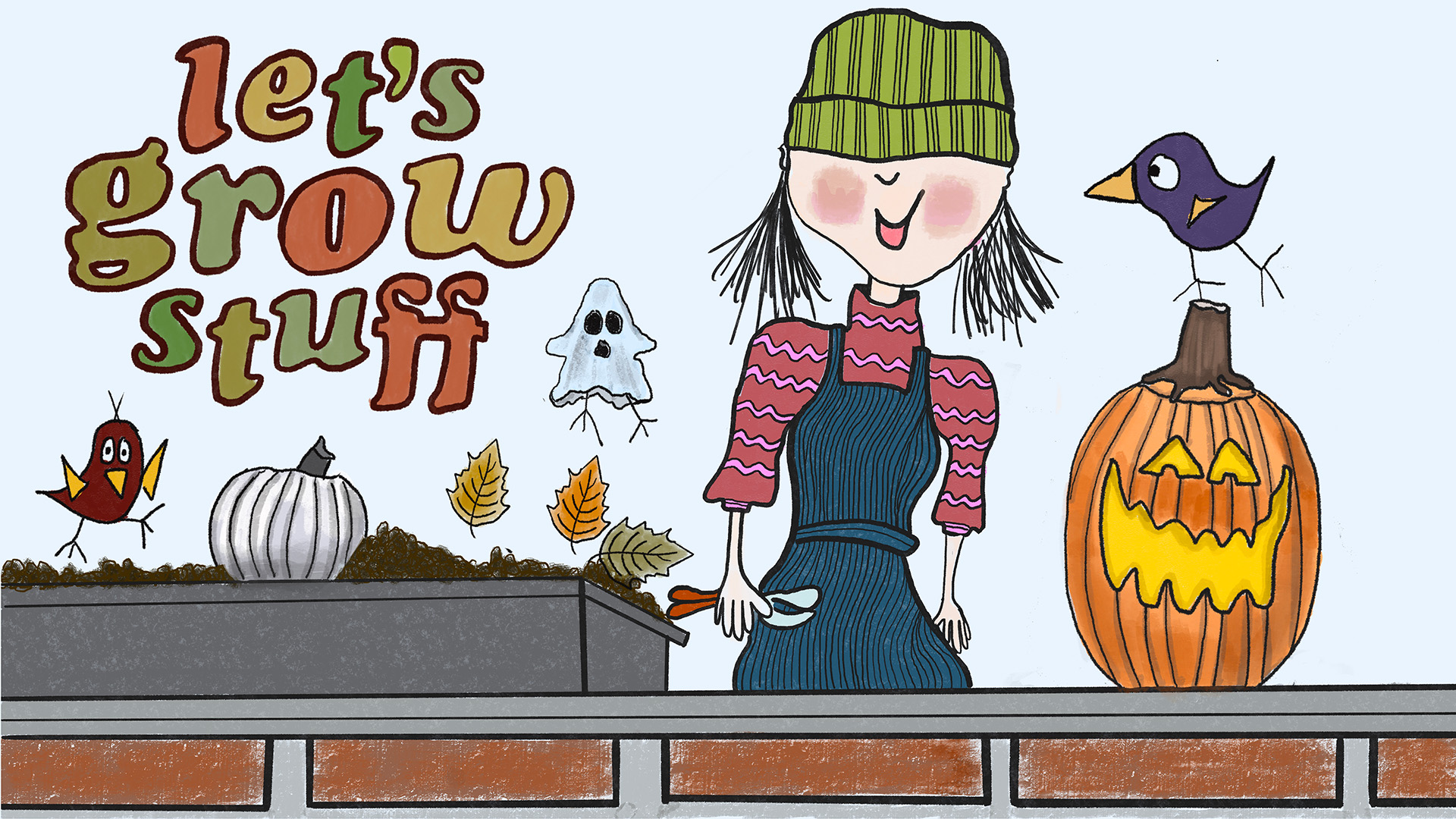Let’s Grow Stuff: A proximity to plants on the balcony
October 20, 2022 Leave a Comment
Greetings from the balcony garden! Sig, here, one final time this season with some reflections on my foray into small-space urban gardening for Let’s Grow Stuff. It’s mid-October, our faire isle sweaters are shaken of their moth balls, and I’m in the process of thanking the plants for all they’ve taught (and fed) me — having cleared off the balcony for the oncoming wint– NOPE, I won’t say it out loud, but y’all know what I mean; it rhymes with “splinter.”
Harvests and seasons
In early August, I reported on midsummer efforts at “succession planting” some of my containers — removing tuckered out plants that prefer cooler, early summer temperatures, and replacing them with heat lovers who enthusiastically grow from July through a September harvest. Pole beans replaced peas, and a veritable Scarborough Fair medley of Mediterranean herbs set up camp in the ledge planters: sage, rosemary, thyme and oregano.

Thinking about what I’ve learned from this work, one observation relates to our tendency to use “season” and “harvest” in the singular in the Upper Midwest. Maybe this isn’t revelatory, but as a new gardener, I enjoyed learning hands-on that our growing “season” isn’t simply the days from our last frost date in May to the first one in October. Instead, there are multiple seasons and harvests ongoing in this short span of time. There are the cooler months, which afford planting of some vegetables well before May (read what I learned about peas!), the warm/hot months with soaring temps, and then the pendulum swings to cool, again. Veggies sprout, and produce fruit, and go to seed at intervals. This means we can return to the particular excitement of growing from seed, or planting, or harvesting, or saving seeds multiple times.
The cherry tomatoes, though? Those suckers took most of the summer to bear edible fruit, but what fruit it WAS! I finally understand why people go all glassy eyed during tomato season. If you’ve never tried them, “Sun Sugar” and “Black Cherry” cherry tomatoes are really good, and you can eat them like gumdrops without the visit to the dentist!

Containers and an intimacy with plants
A thing I learned to love about container gardening is the closeness you achieve with your plants. I haven’t gardened enough to know for sure, but I suspect it’s a different experience when you grow many vegetables plotted in rows. In my case, my plants were few in number, bound to their pots or ledge planters, such that I could look very closely at each of them. They sat only steps away from the door off my bedroom — I’d water them daily, pop out on a break, or wake up with my morning coffee and just observe. I was able to see how a particular vegetable grows — when it shows signs of struggle, when it needs a helping hand, or when it asks for less attention (less water, less man-handling).

Sometimes I watched elements of the built landscape — the brick and mortar of my building and its denizens — and the vegetables rely on each other in surprising ways. My favorite visual memory of the summer arrived when the snap peas grew their delicate tendrils, and a long spider web, spun-up by an eight-legged friend living in the crook of the overhang, grasped onto one — web to tendril. I don’t know if spiders or their webs are enemies of peas, but I couldn’t bear to break the bond. I told myself they needed each other to stand against the elements, and I left them undisturbed as many days as I could until a severe storm moved in and tore them apart.
From each according to their ability, to each according to their need
You’ll poke fun at me for this one, but container gardening reminds me of a tenet of social philosophy that is foundational to my life. When we choose to grow and care for a plant, we accept – even love it – for what it can do and what it simply can’t do. When a pea vine bends to sweltering heat and decides it’s time to stop, we don’t judge it as weak. When it needs a climbing trellis, when a tomato needs a tall stake for stability, we don’t ignore these needs because they are inconvenient — we tie up a bamboo poll, we design and erect the trellis; we provide every accommodation for the thing to thrive in the face of a (sometimes) fundamentally unfriendly environment.
We fully accept that every organic thing has its strengths and its limitations — that it is our obligation to marshal our own of the former to help the living things in our community flourish. I think there are lessons to be learned in the unflinching way we help our plants, the way we love our plants.
The beauty and promise of rest
So, what now? Well, with the balcony back to its bones; a stout, grimacing Halloween pumpkin on the ledge; the occasional squirrel popping by to say “howdy” through chubby cheeks hoarding tree nuts — I think it’s time to prepare for rhymes with “splinter.” It’s a misnomer, however, to designate this annual transition as a season of death, when gardening teaches us that it’s really a season of rest. And Wisconsin provides an ample amount between November and May.

It’s a little brisk on the balcony, and I’m ready to take a break, to start paying more attention to my houseplants. And, before long, we’ll get to dream of spring once more, and all the new stuff we can grow together! Wishing you and the soil, all our hard-working hands and our soon-hibernating pollinators some well-deserved rest, and thanks for following along!
PBS WIsconsin Let's Grow Stuff Ben Futa Sigrid Peterson container gardening Qwantese Winters
 Passport
Passport






Nancy G. says:
Hi, Sig. I concur with Elizabeth: a very enjoyable read. If you decide to expand next year, add a sweet or hot pepper plant to the mix. They’re very easy to grow, tho you need patience. The fruits take a very long time to ripen. They do quite well in a smaller container and usually don’t grow very tall, more bushy (depending on the variety your select).
Have you considered bringing your herbs indoors for the winter? I did this for the first time last year, and my parsley and rosemary did very well in my southern window. The key was the sunlight from the south and keeping up with the watering in a dry house during the winter.
Gina Jones says:
This is the first time I read this blog, and I have to say that I so enjoyed your writing, insight, and just plain fun of it all. I’ll be back next spring to see what you have to say! Till then- “sweet pea” dreams.
Sigrid Elizabeth Peterson says:
Thank you so much, Gina (this is Sig). Grateful that you read it and some deeply restful “sweet pea” dreams right back to you!
Gina Jones says:
🌱💗